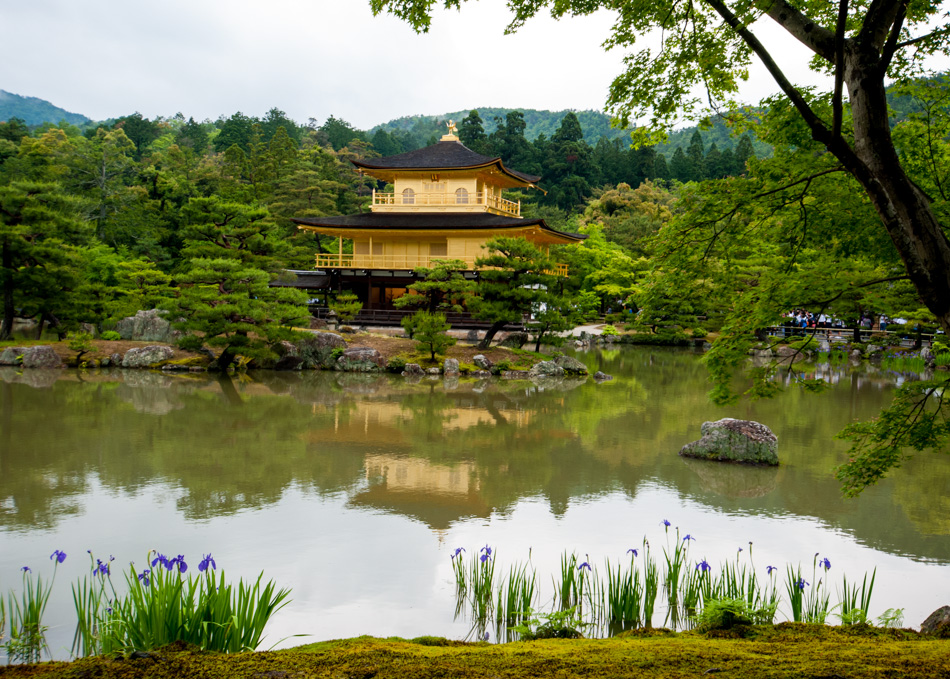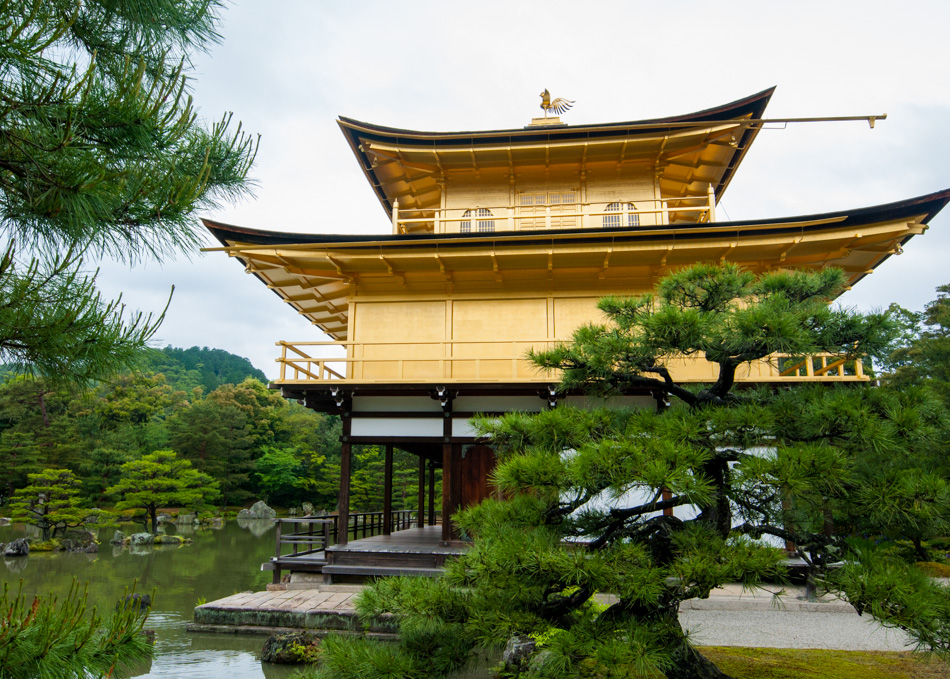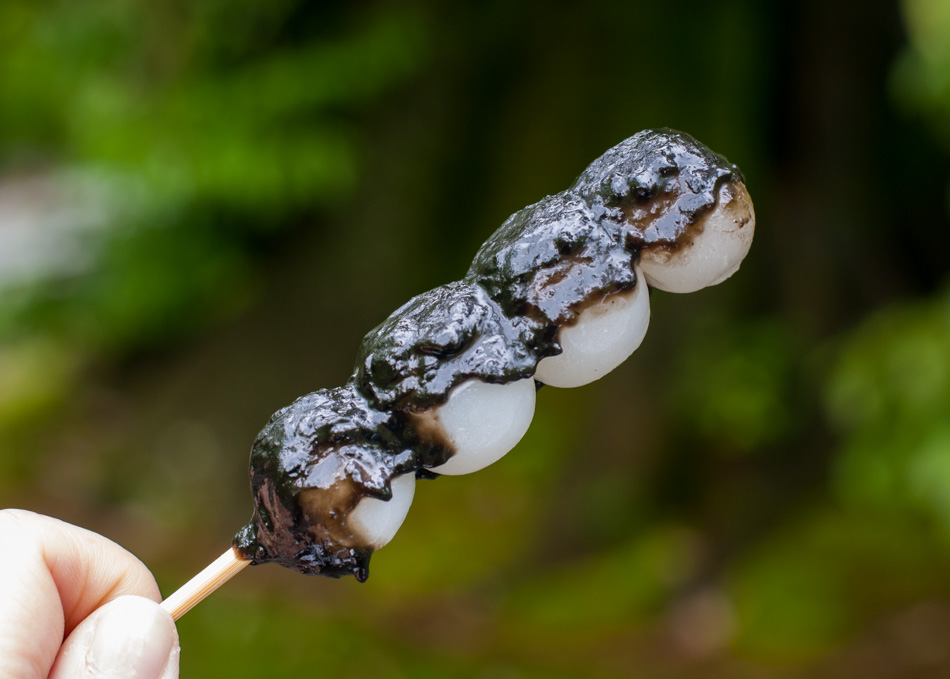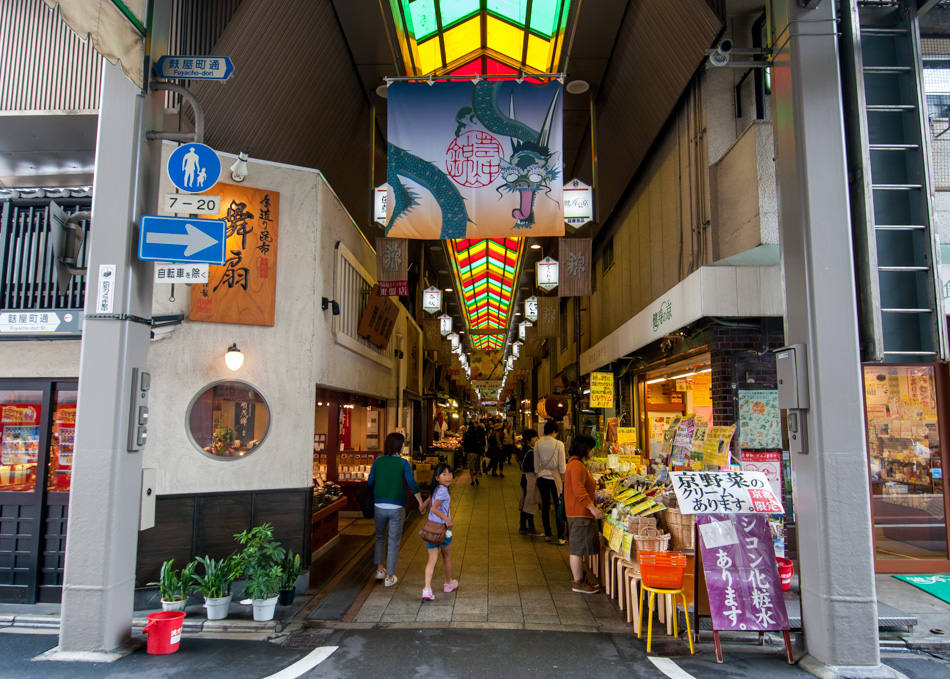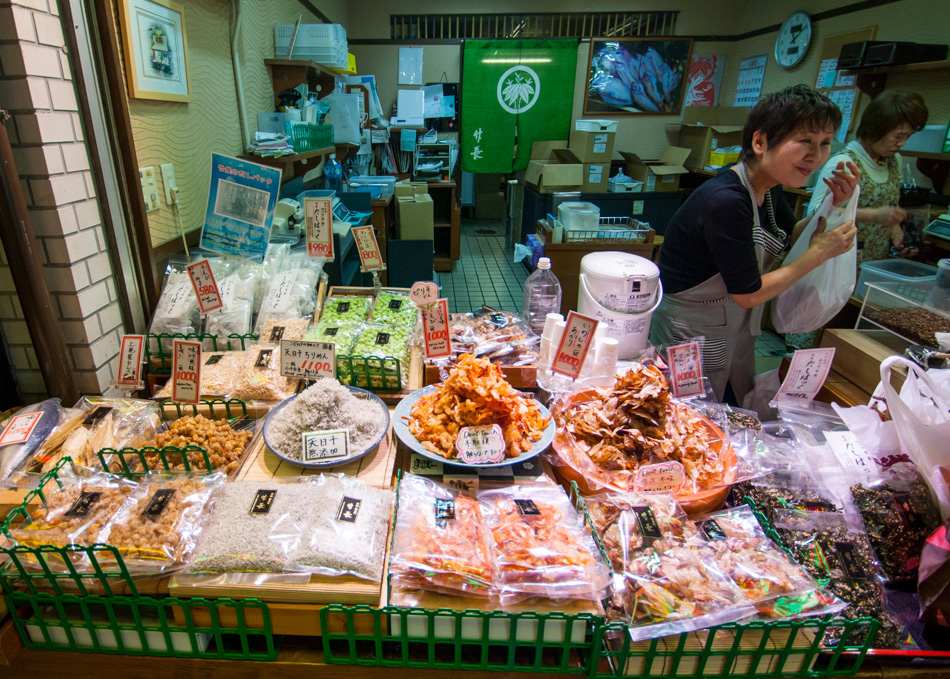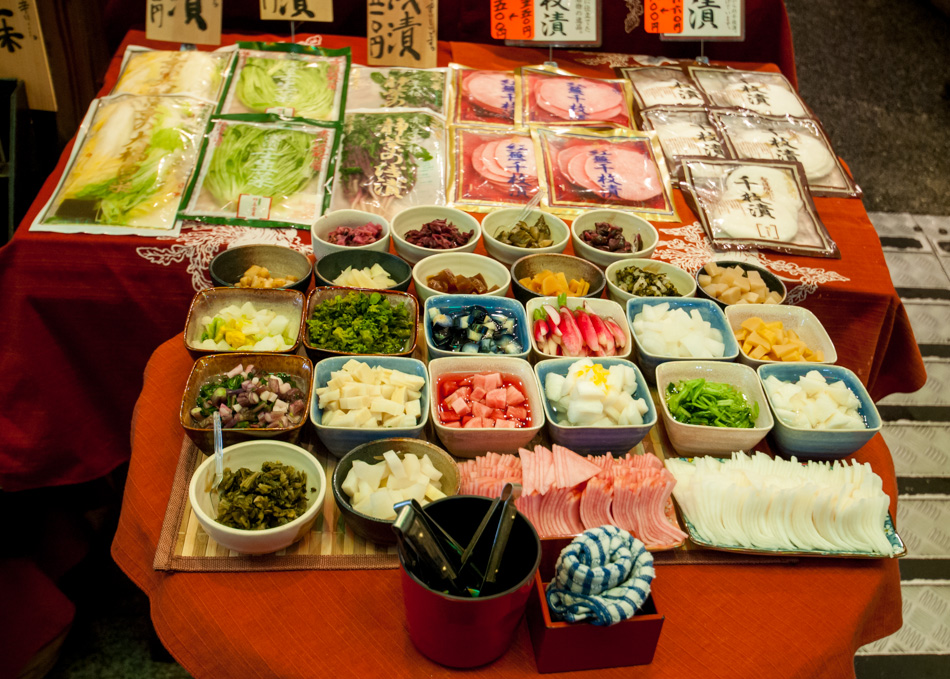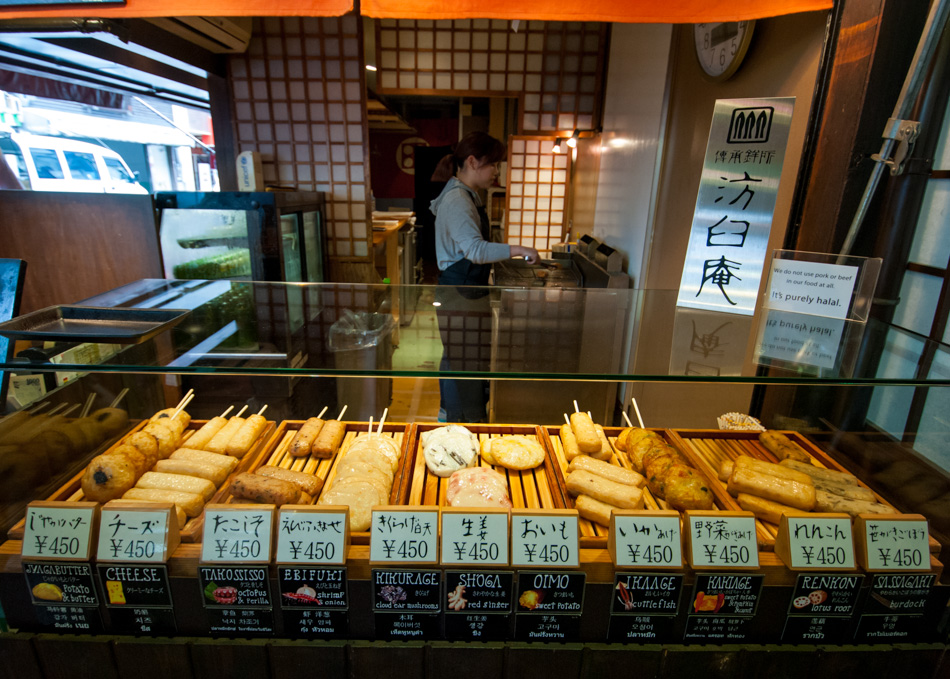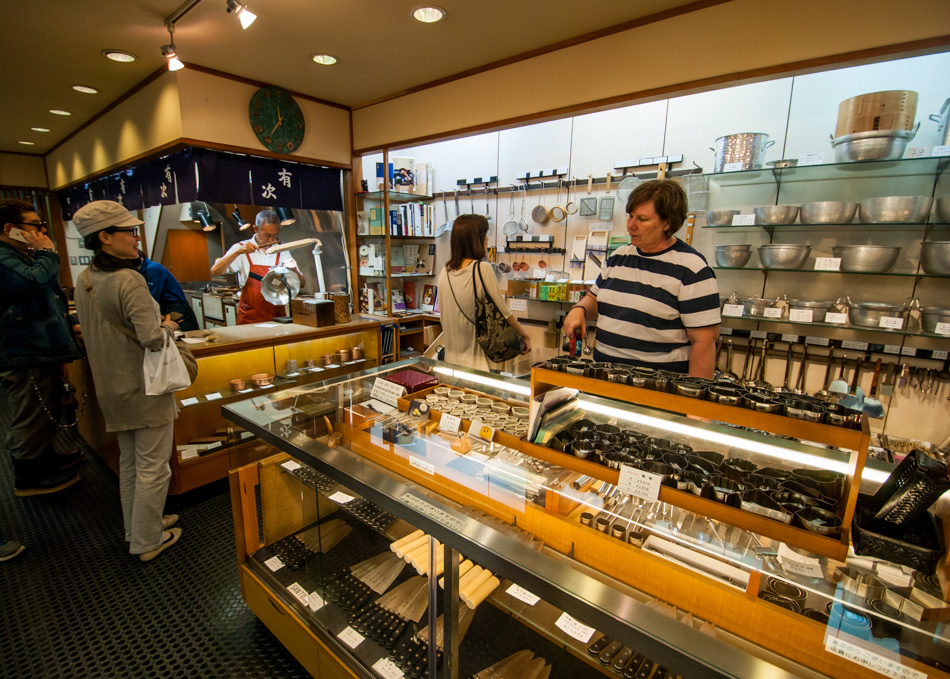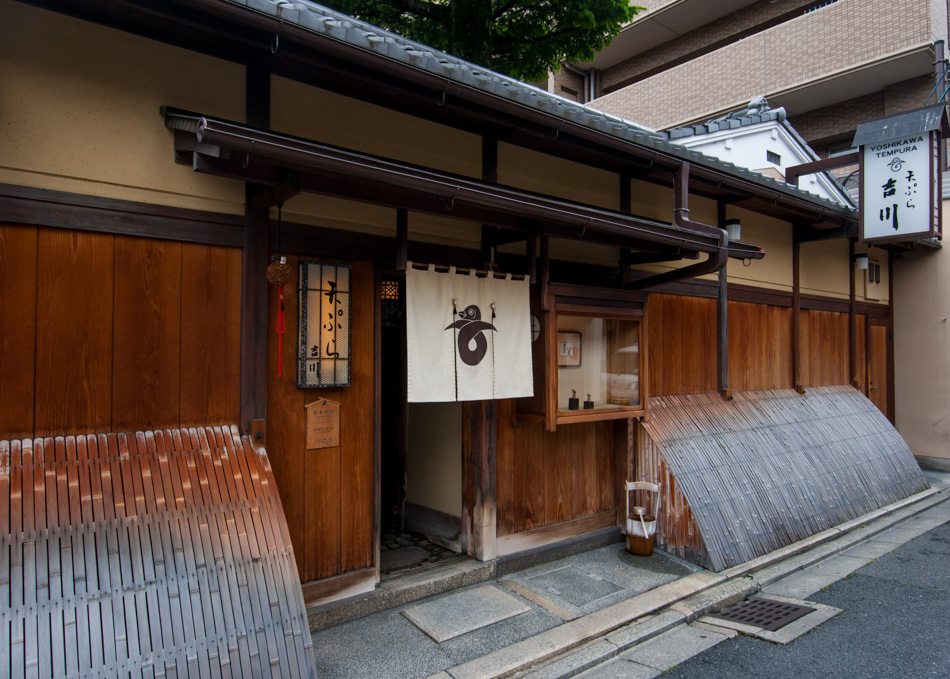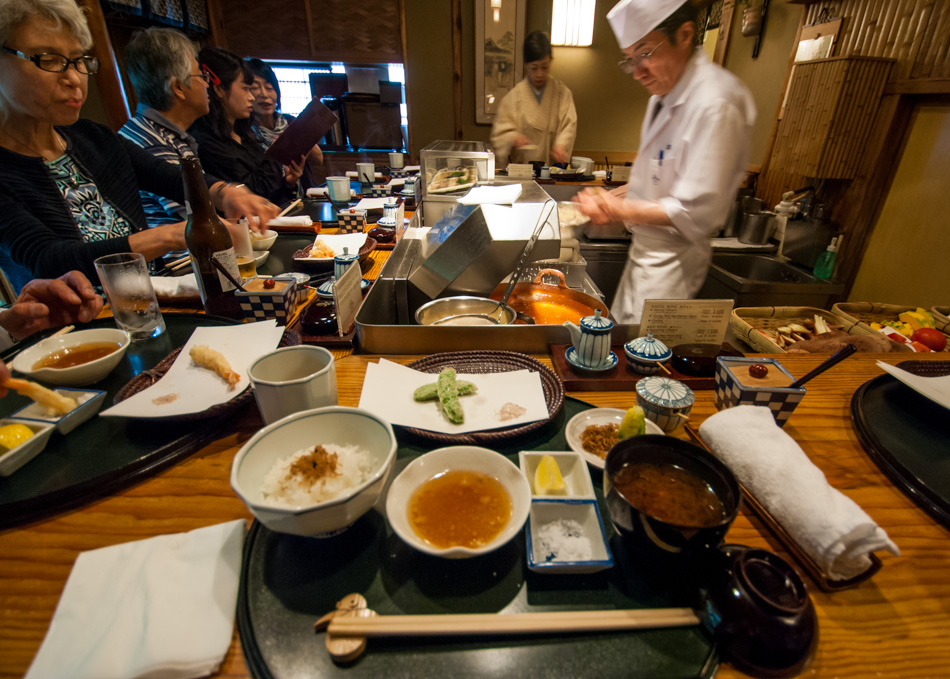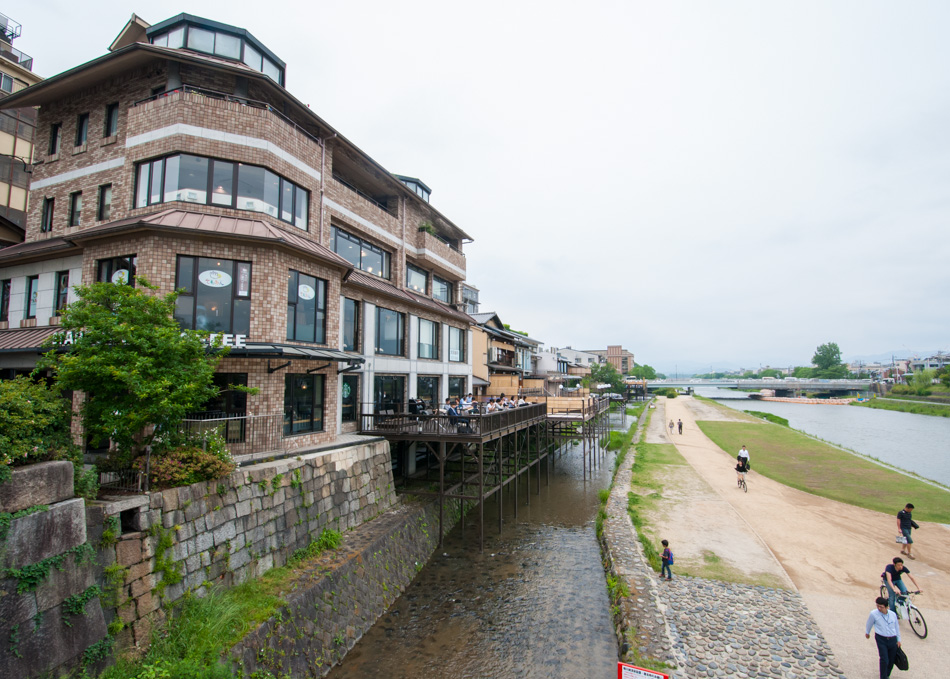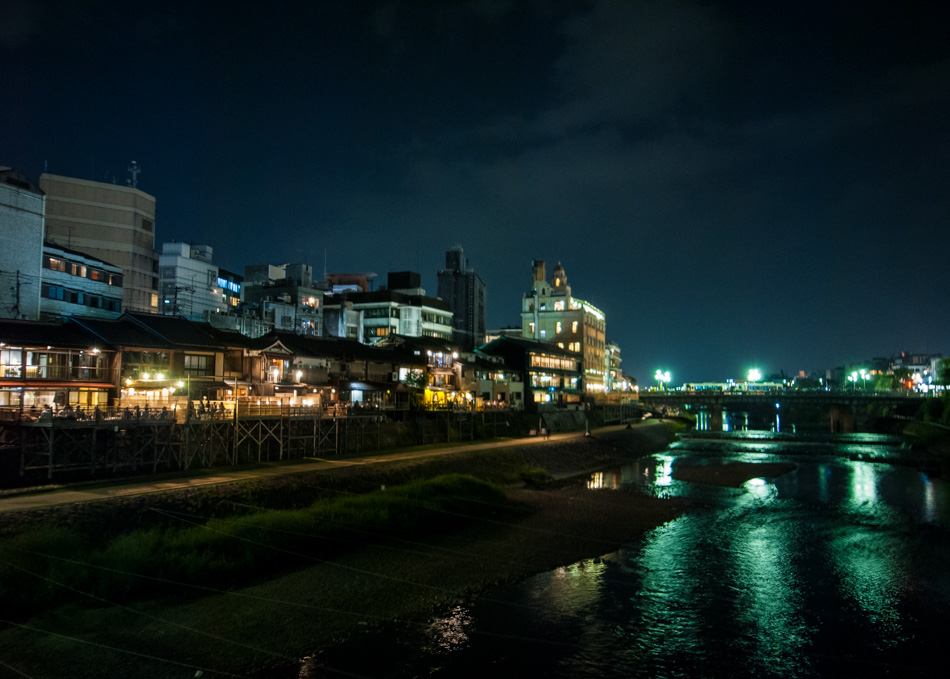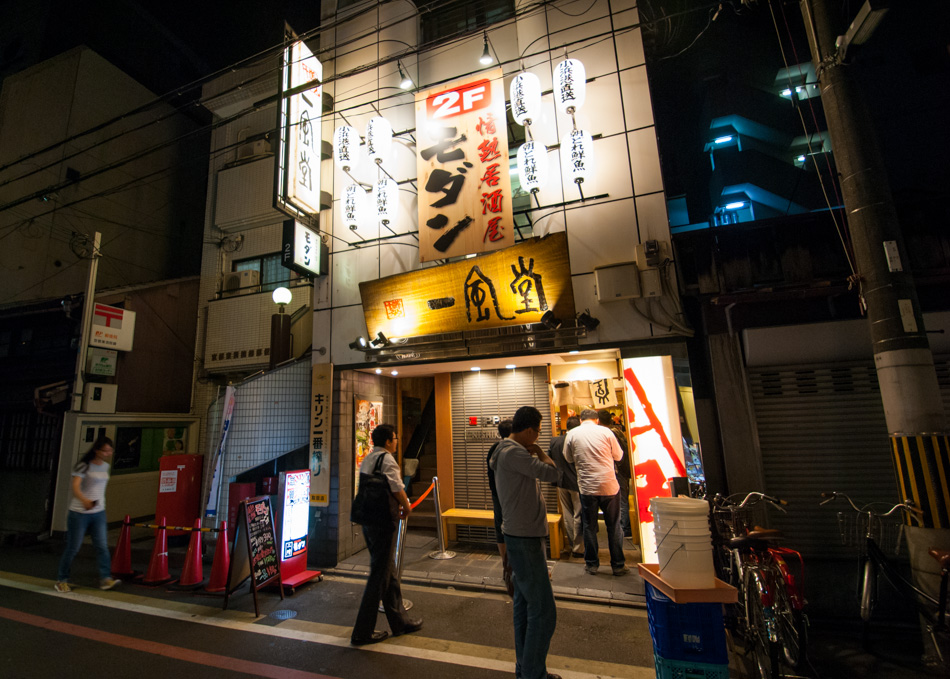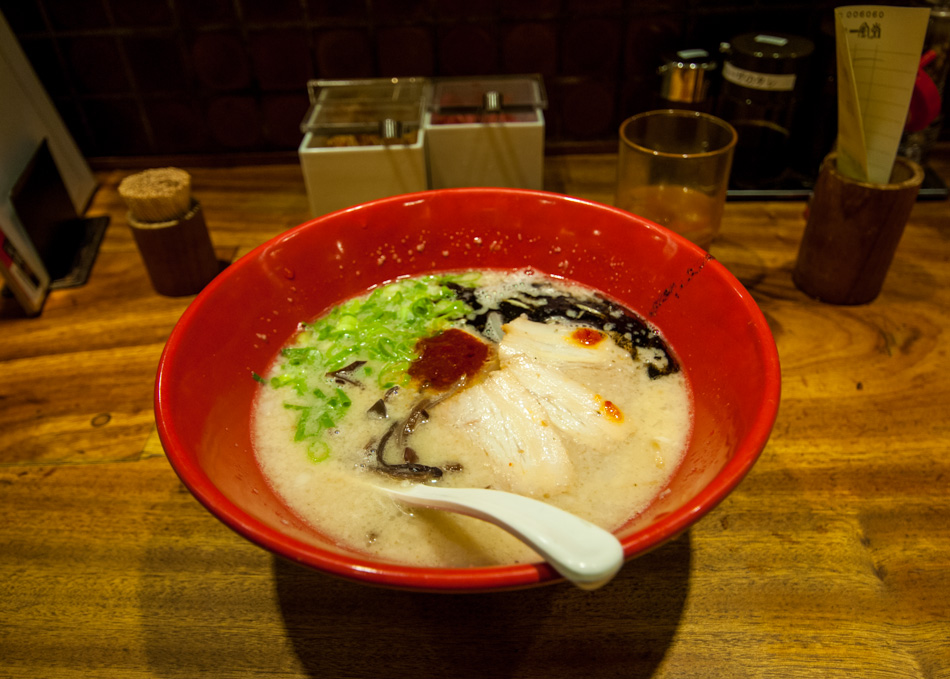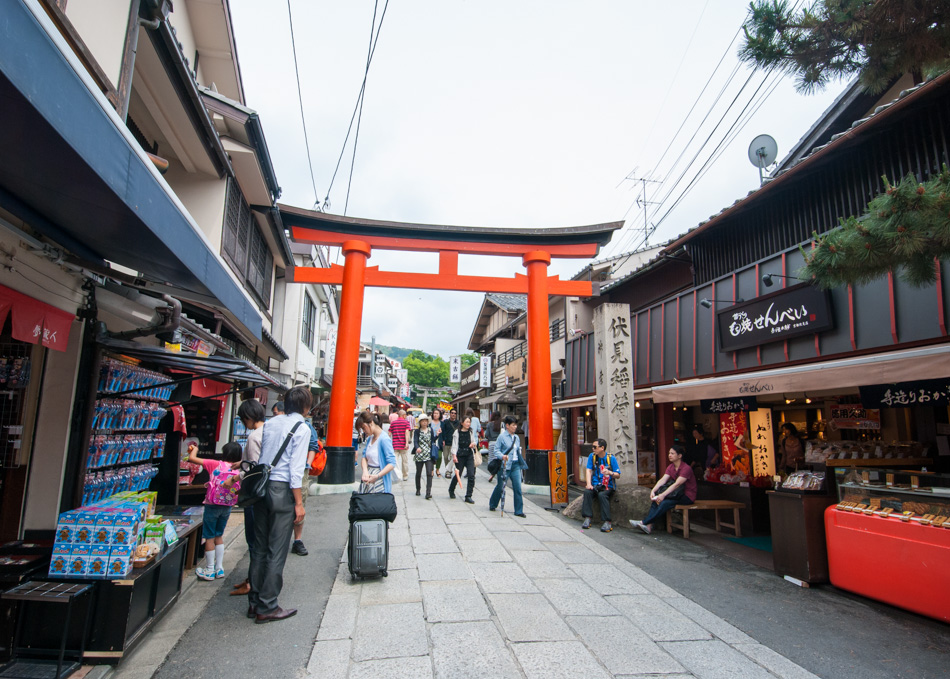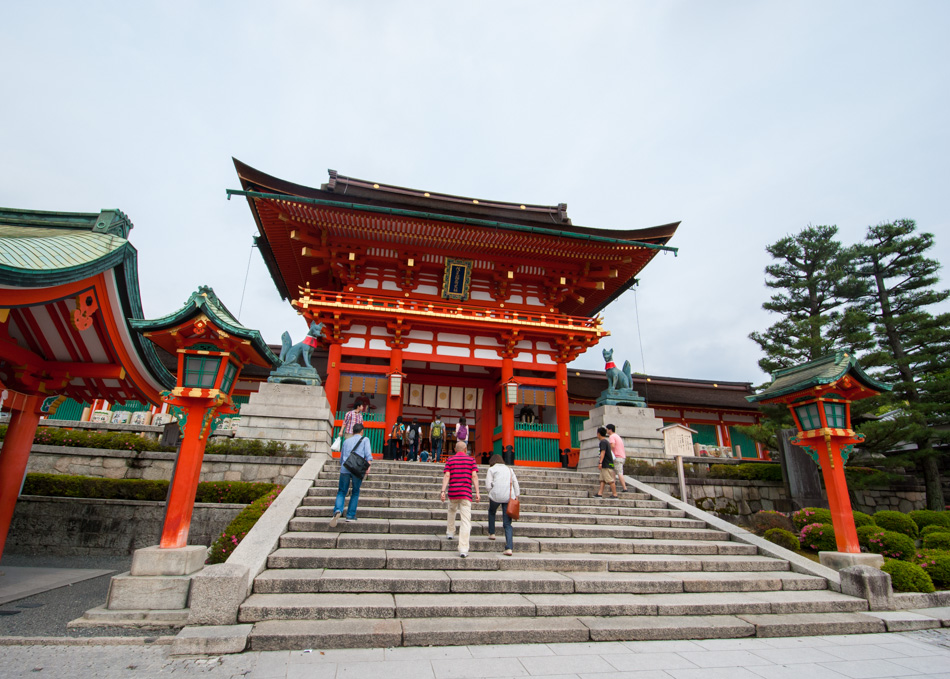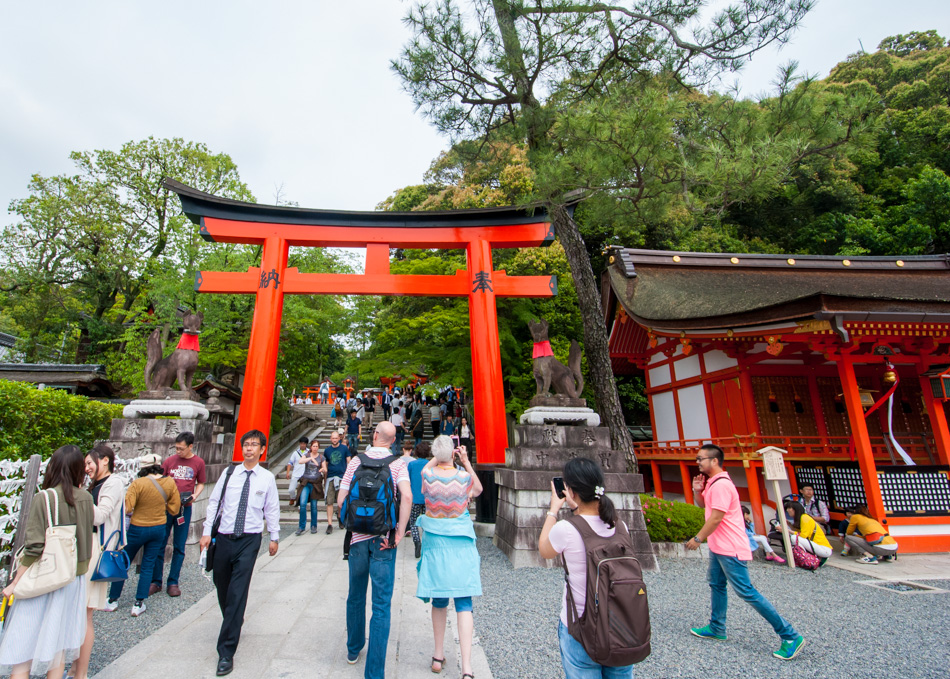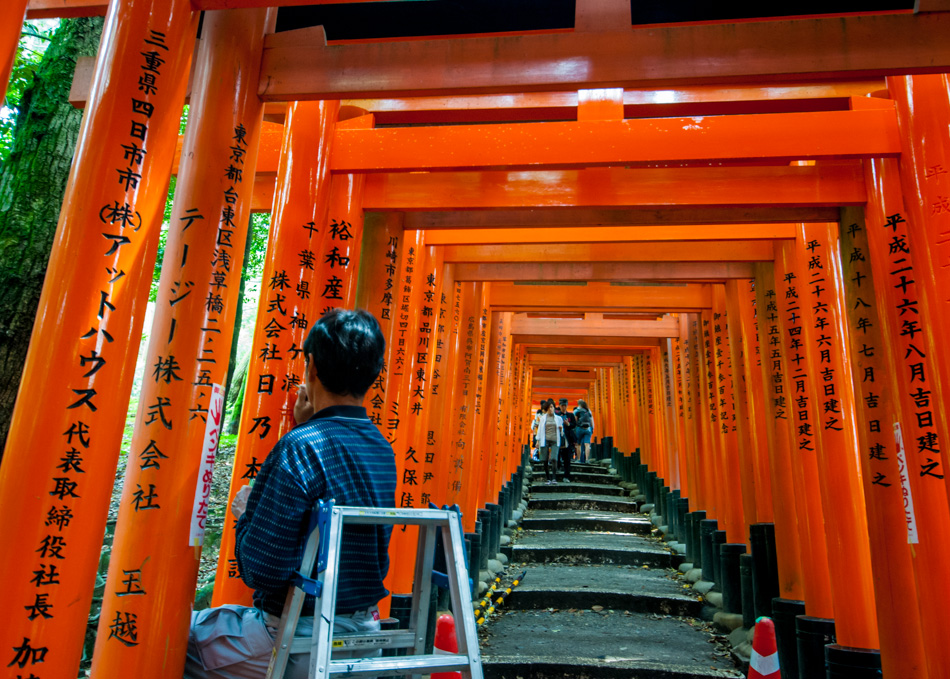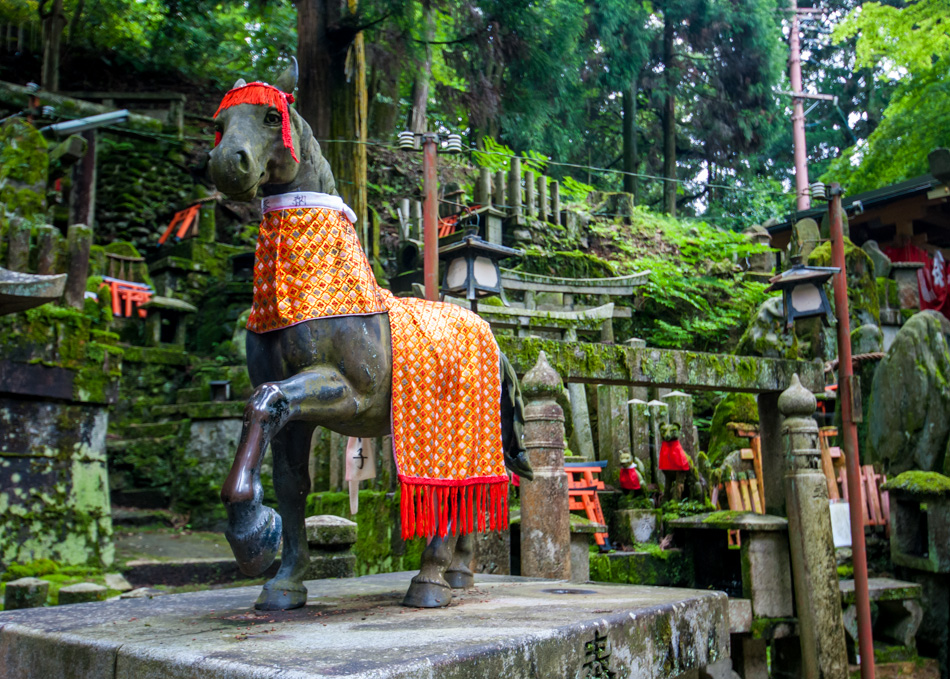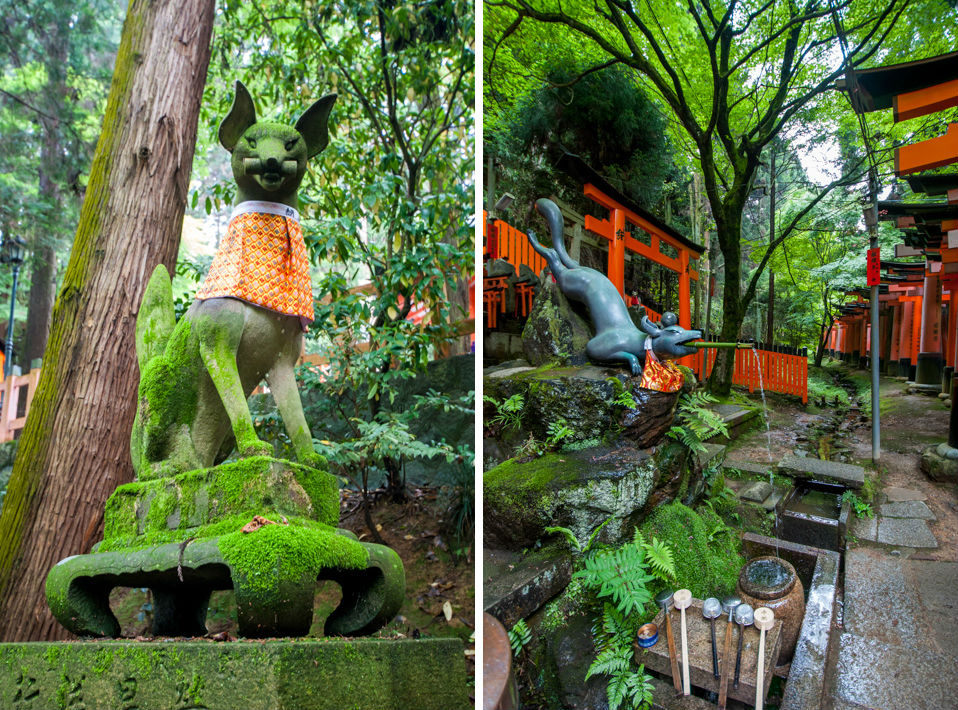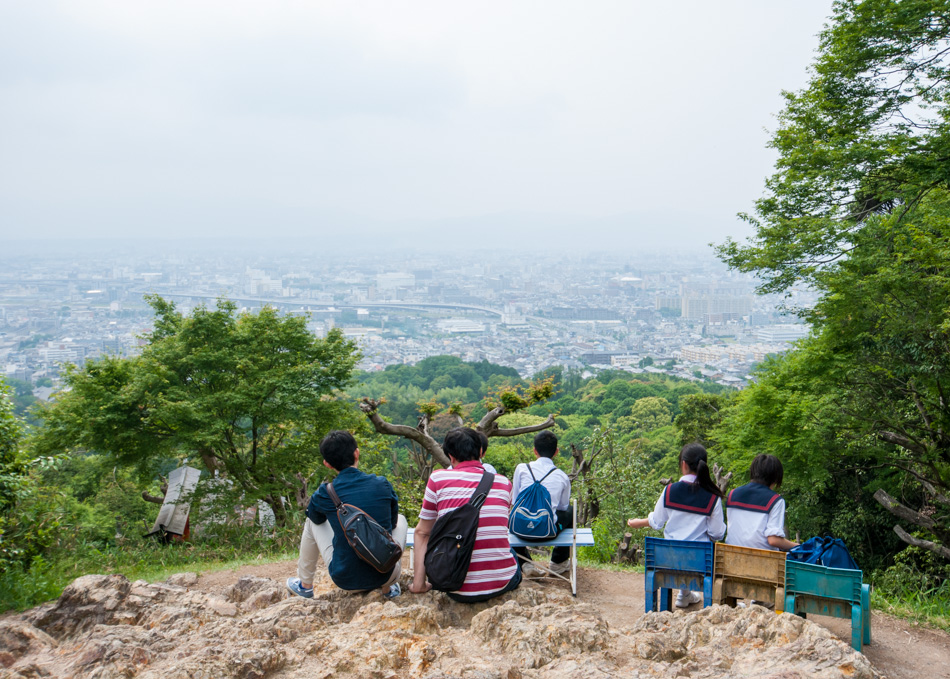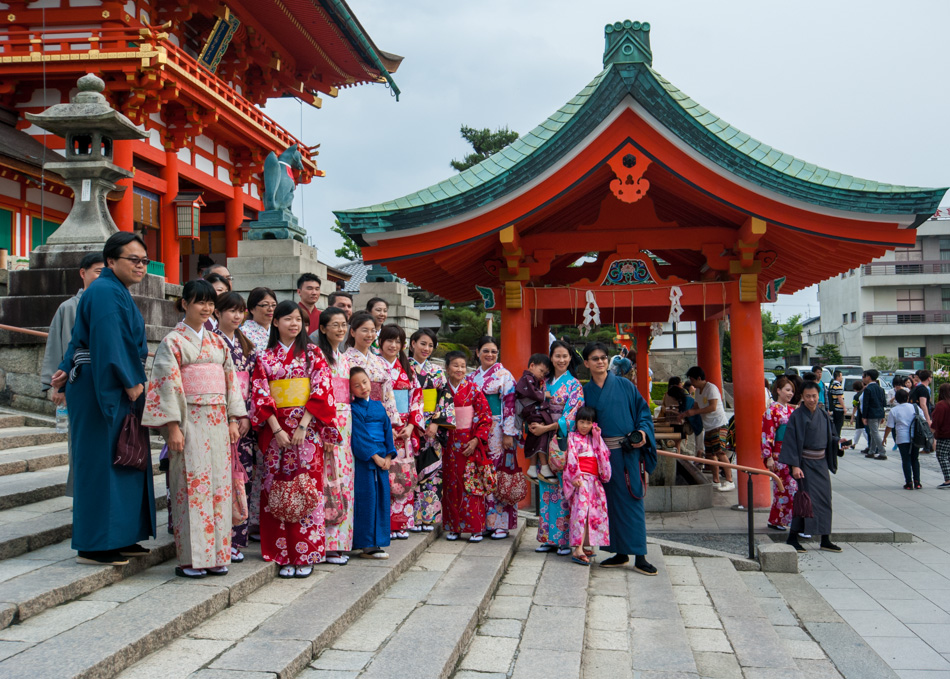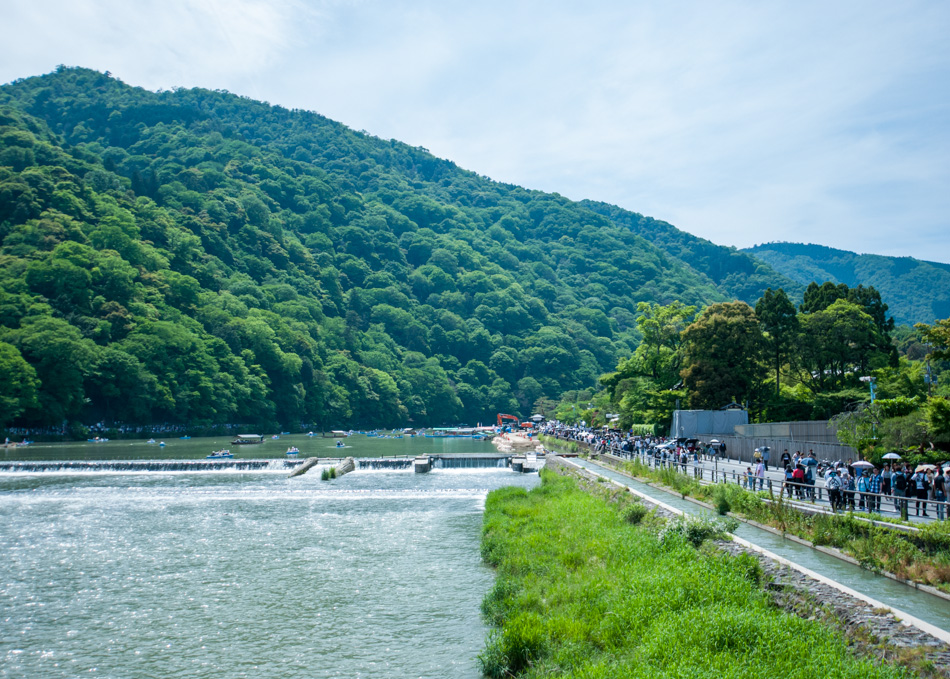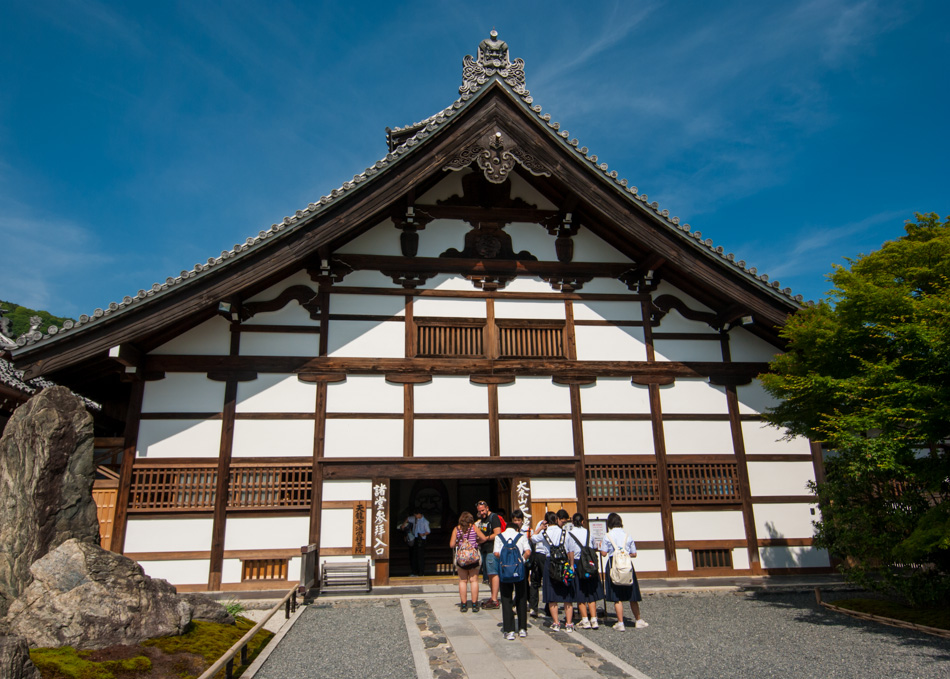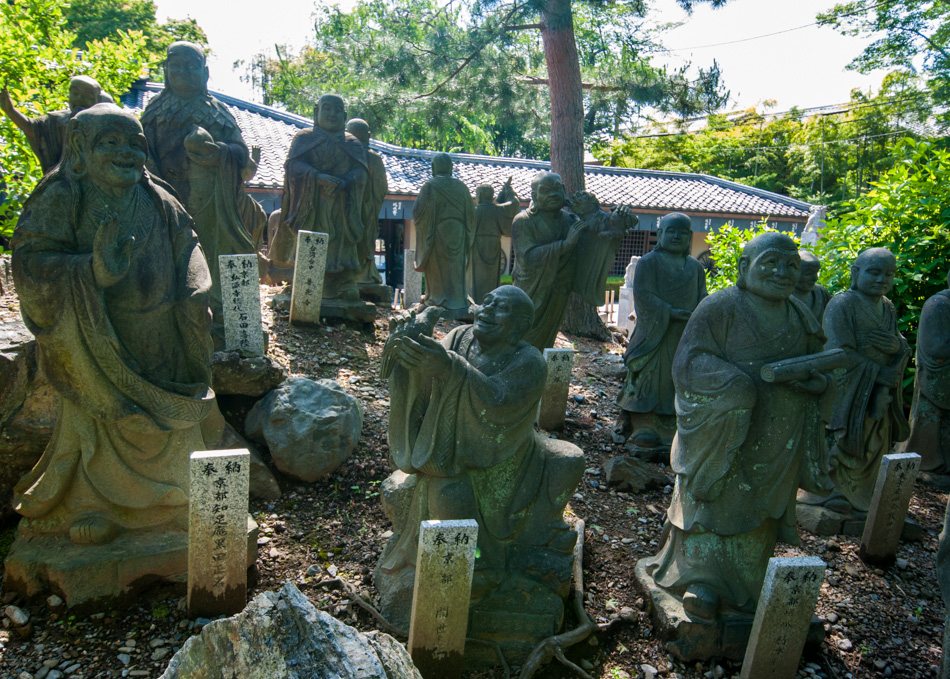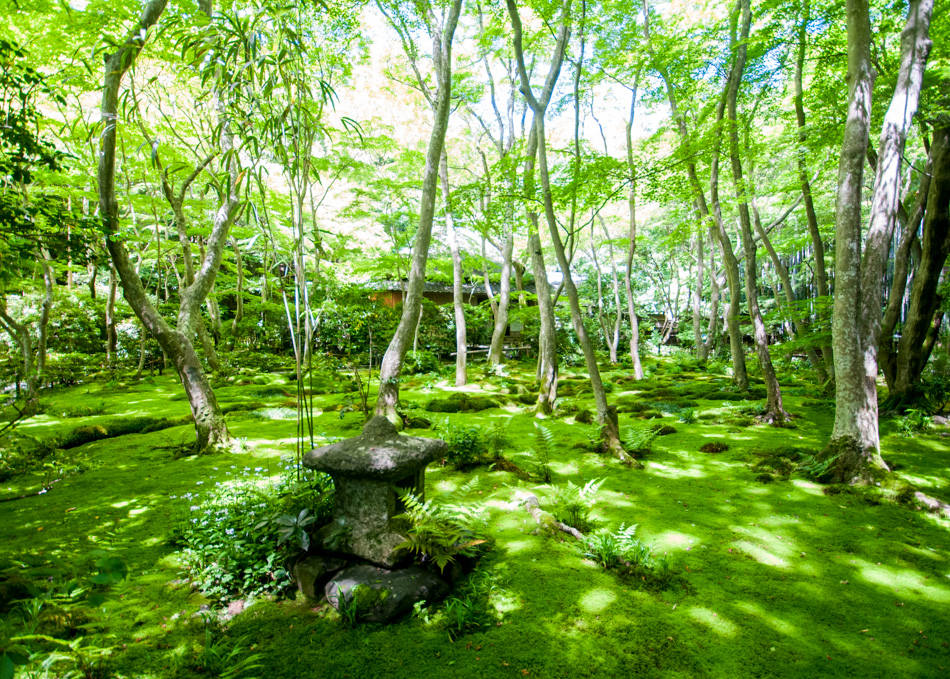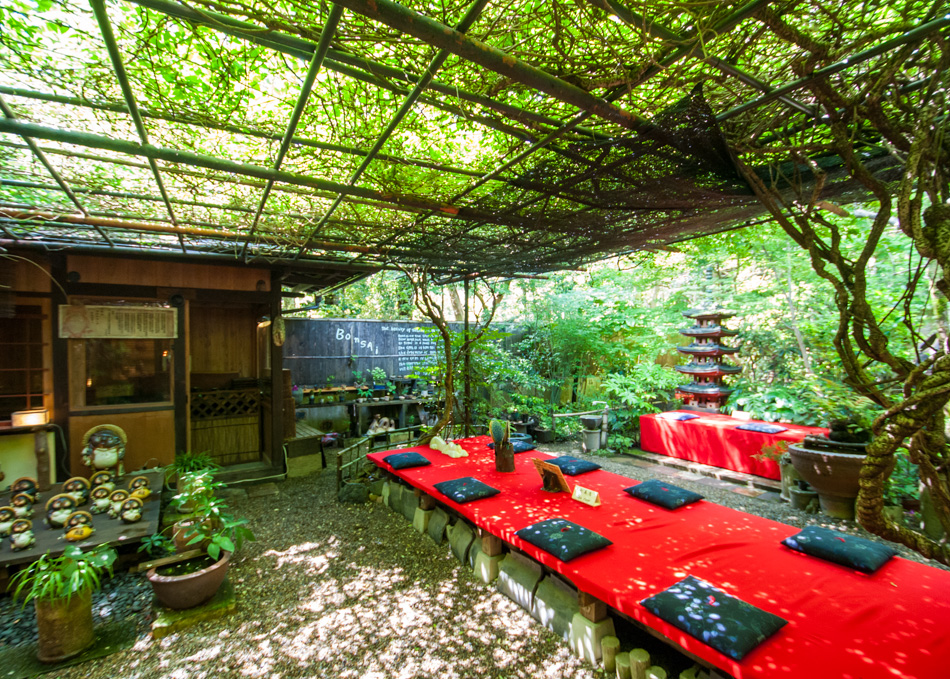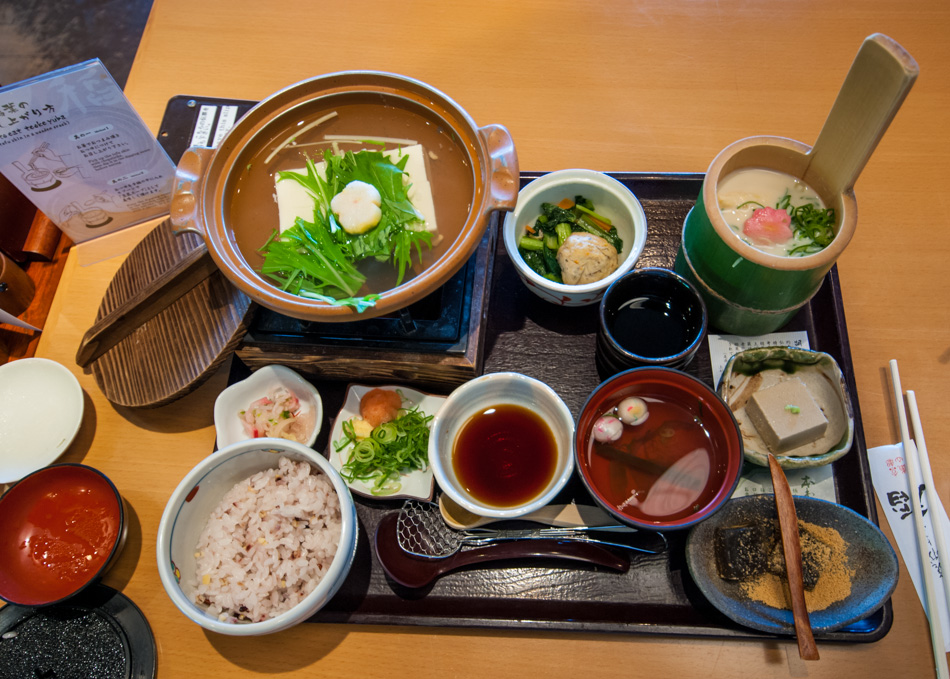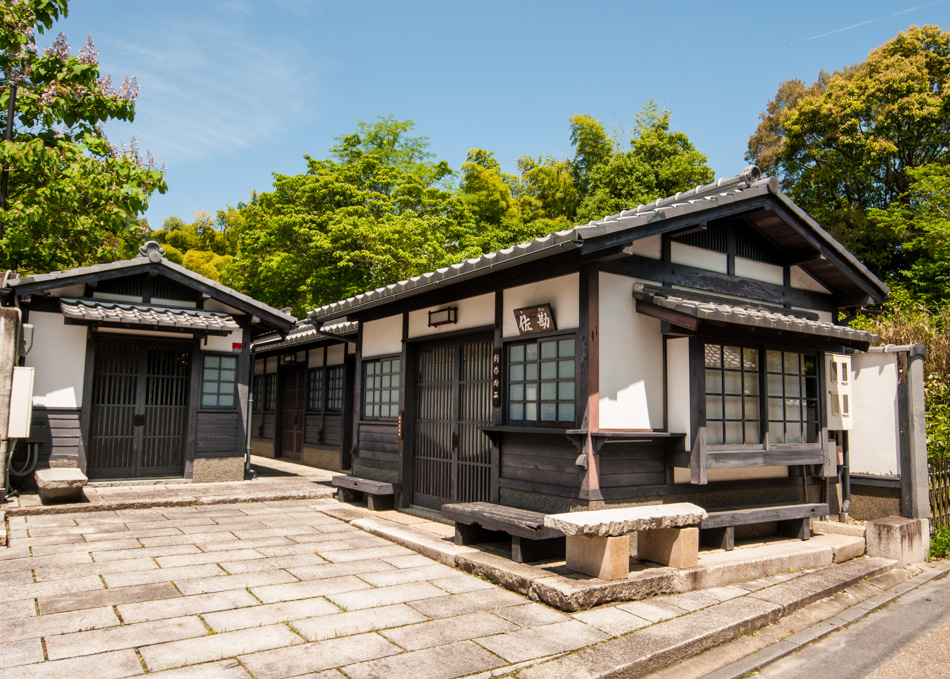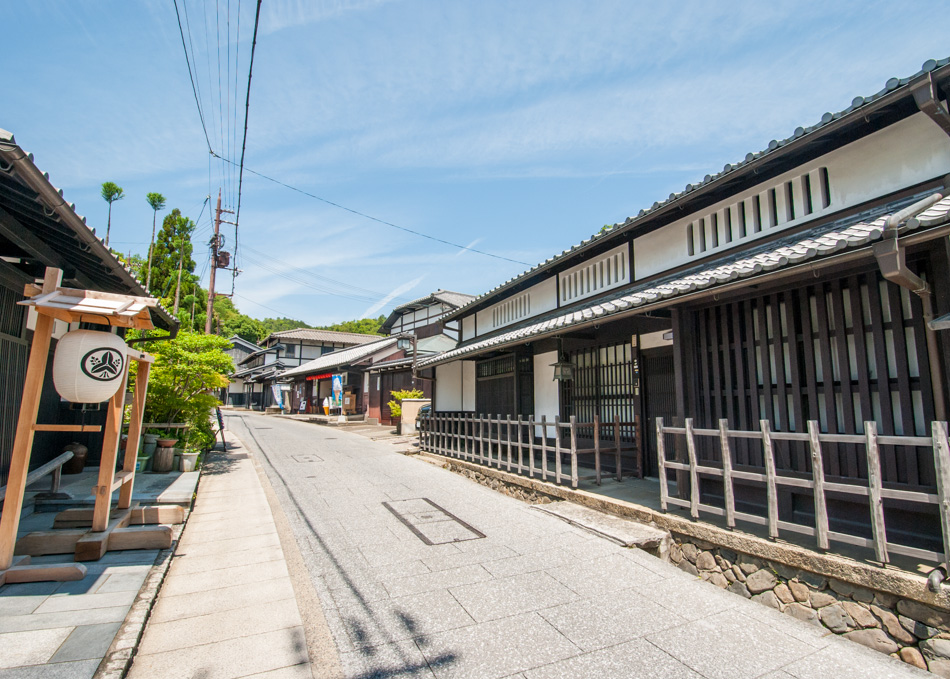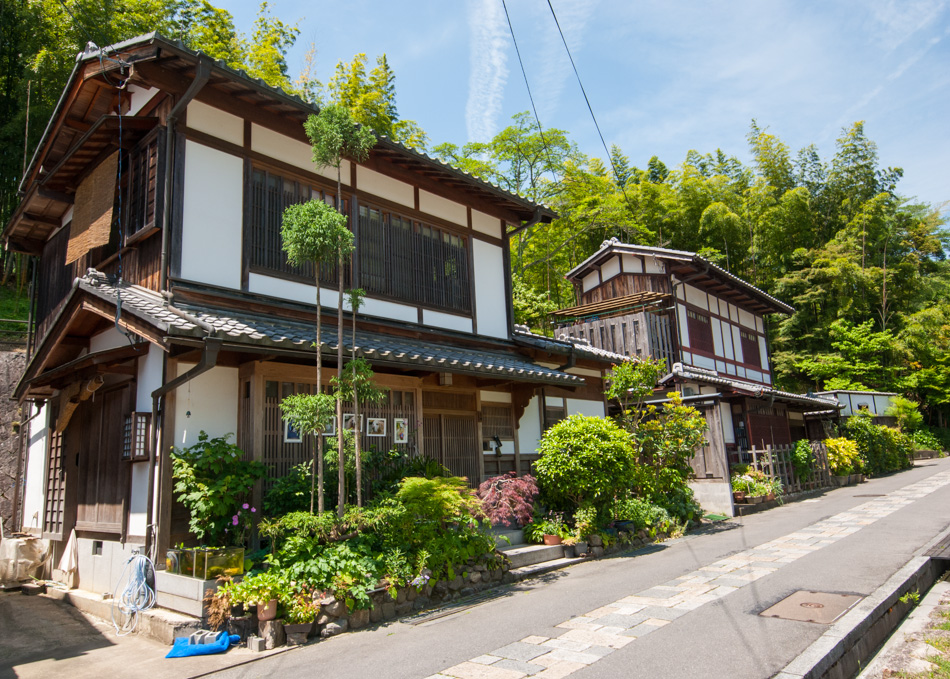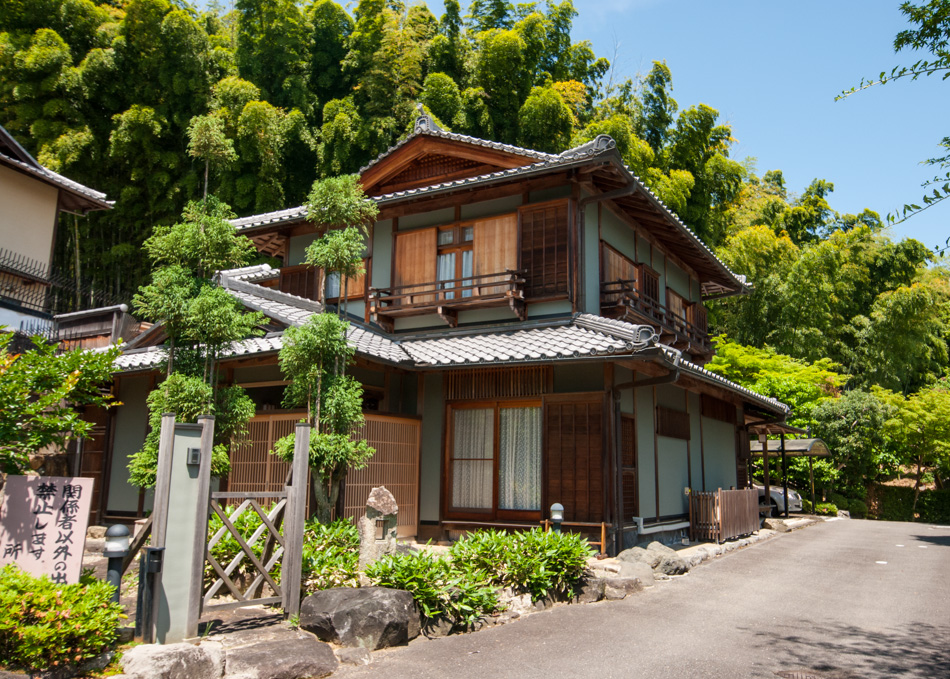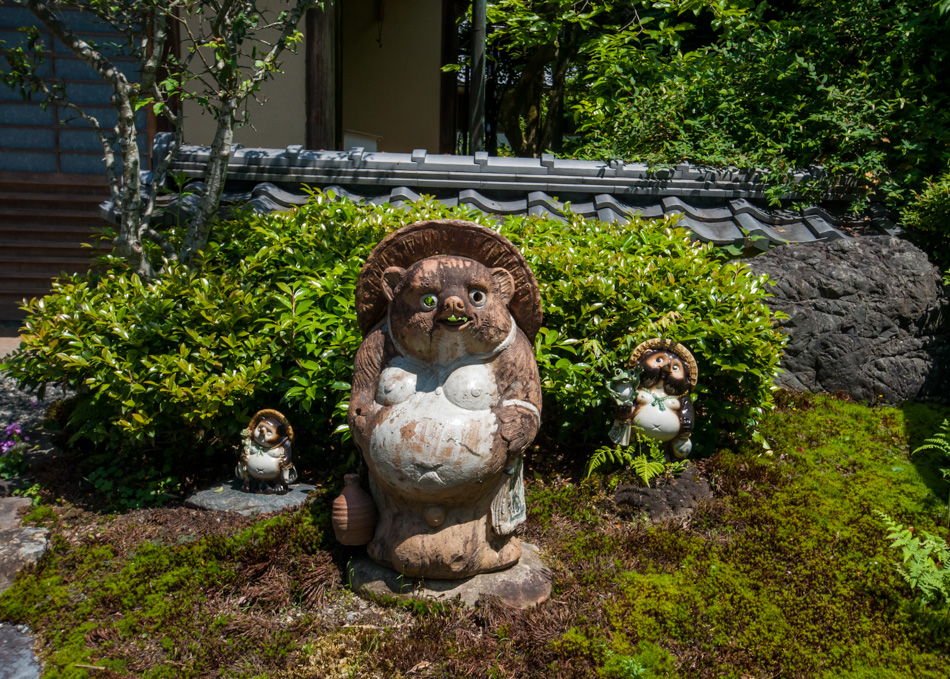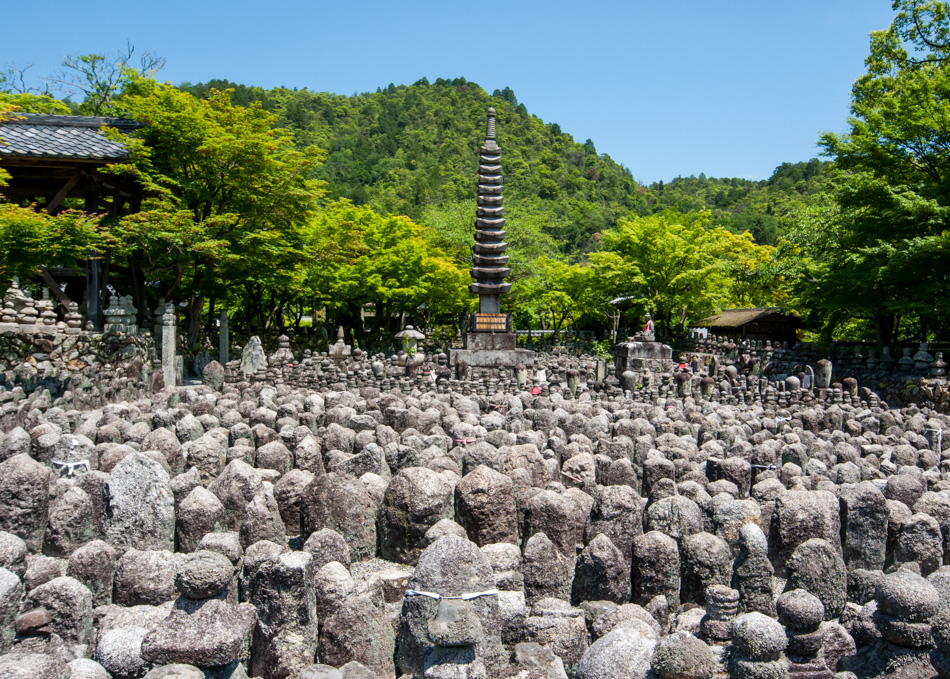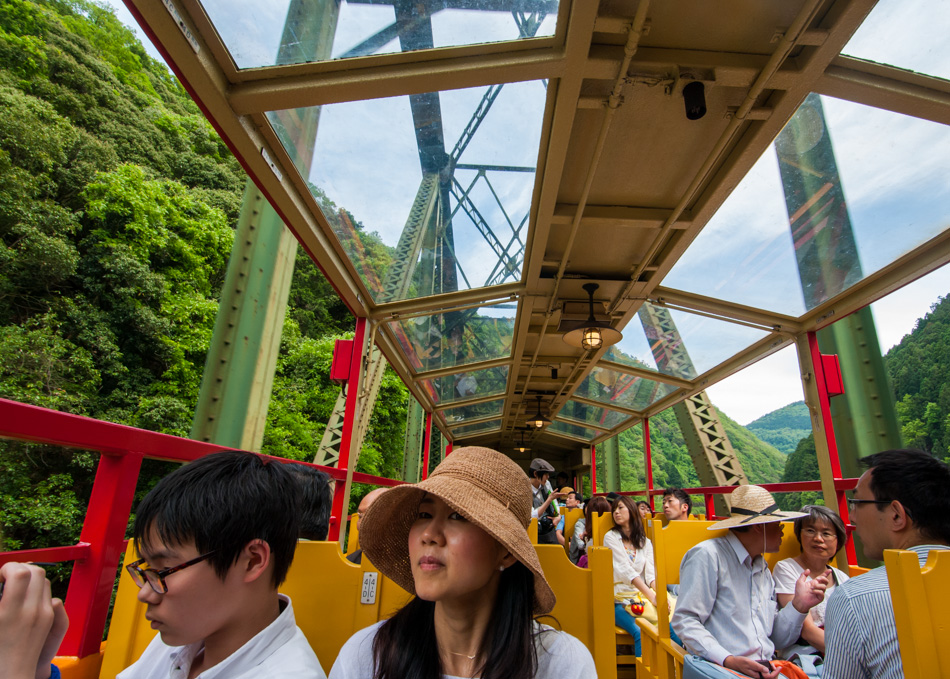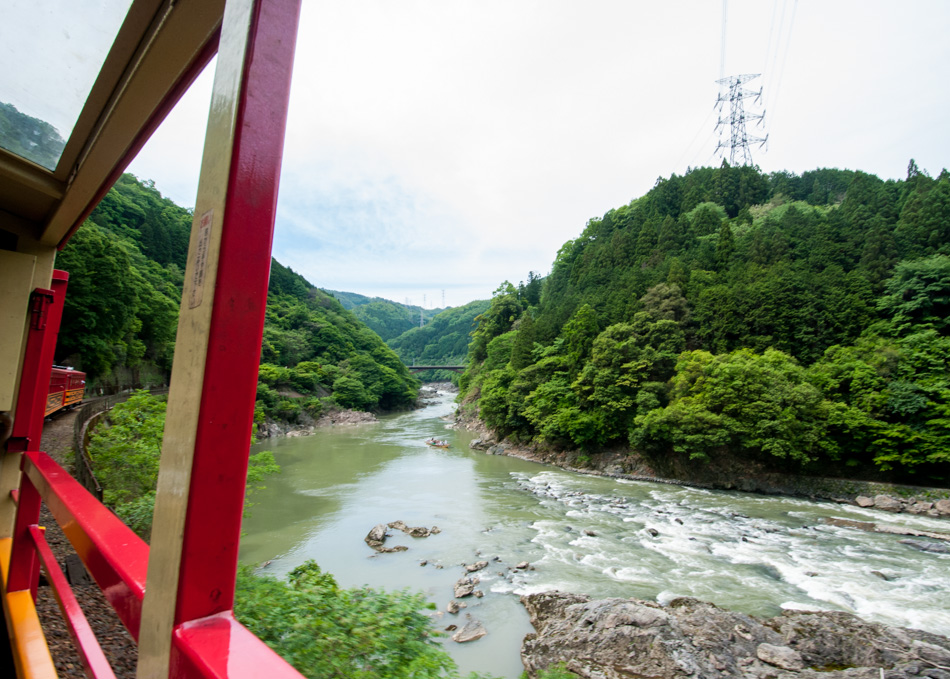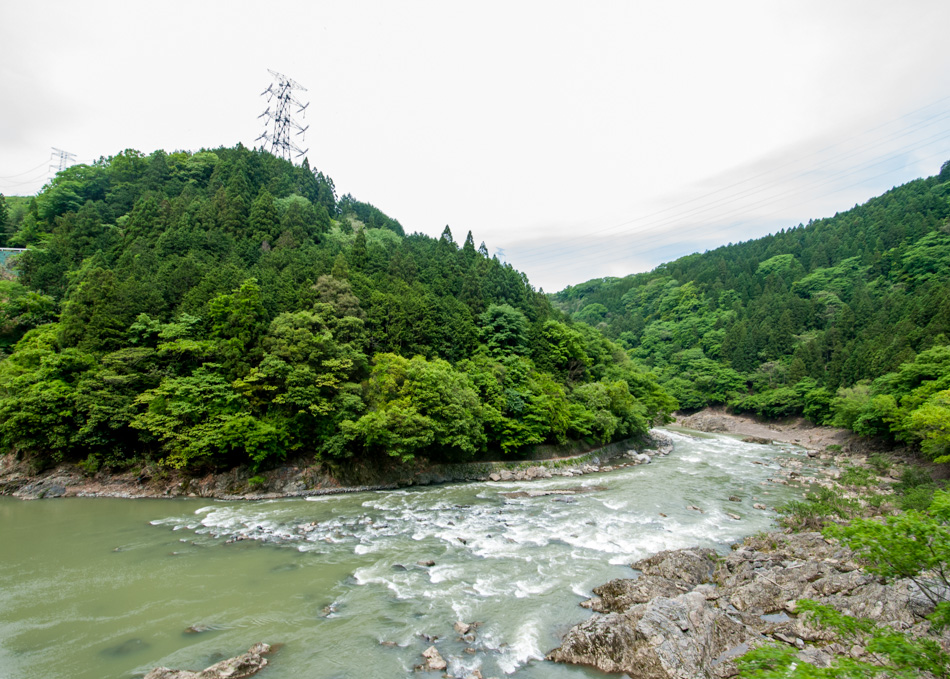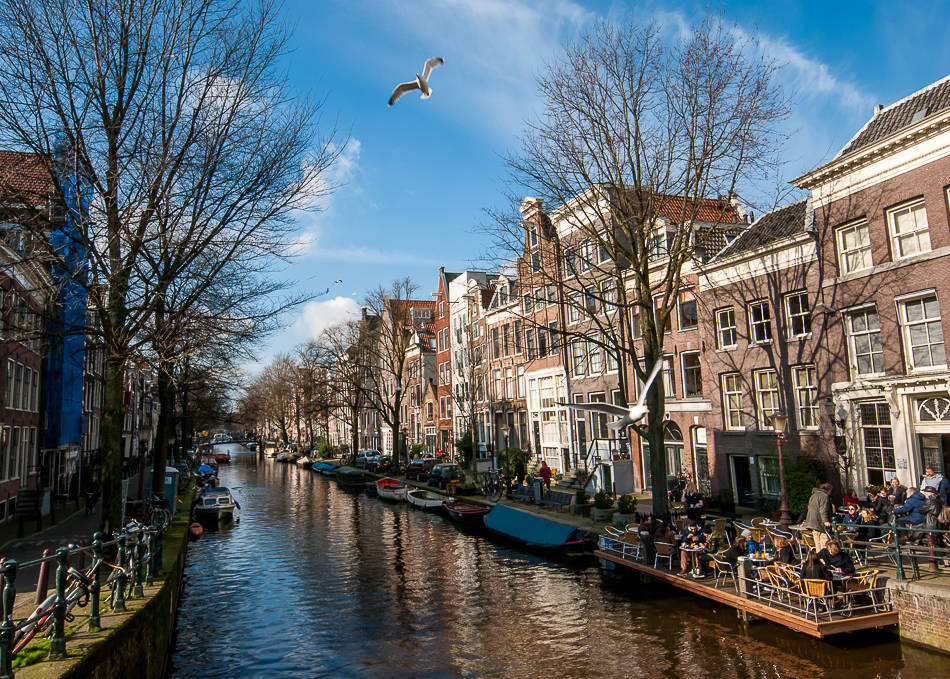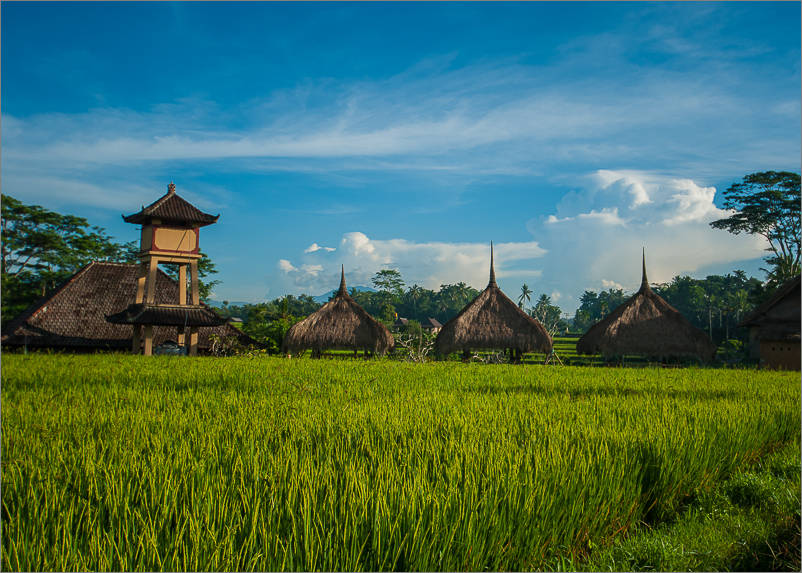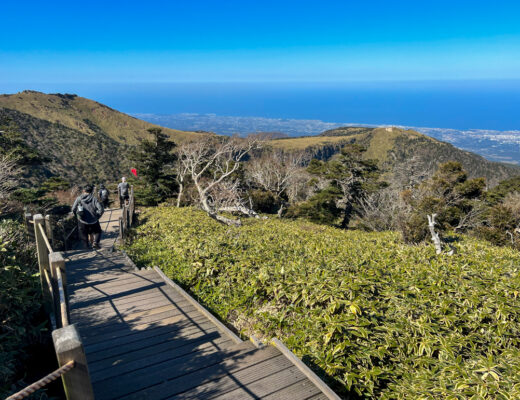After being charmed by the geisha district and its surroundings (see previous post), there is still a lot of stunning sights to contemplate and edible delicacies to bite into in the centre of the city and the outskirts.
With a little trek to the northeast of Kyoto, an early morning start is crucial to appreciate the grandeur of Kinkaku-ji, the Temple of the Golden Pavilion, and to somewhat beat a tiny fraction of the thousands of daily visitors to the site. Nevertheless, all the crowds in the world couldn’t detract your attention from its splendor once you stand right in front of it…
Nothing screams Kyoto more in this moment than the golden reflection shimmering across the rippled surface of the pond and the manicured gardens all around, originally said to represent the ‘Pure Land of Buddha’ in this world…and I can see why.
The 14th-century original was torched by one of the temple’s crazy monks and you’re now looking at the current gold leaf-coated reconstruction from 1955. Each of the three levels of the temple holds a specific meaning: The bottom level represents the Heian period, the second embodies the samurai warrior spirit, and the third is the Zen floor, all of it capped with a golden phoenix and as majestic from up close as from across the pond.
There’s a nice little path behind it to go through the gardens to see another pond, some statues and a teahouse overlooking the temple. Some snack vendors were selling sweets and I got my hands on glutinous rice dumplings with black sesame sauce which were delicious!
Heading back towards downtown with their efficient bus and subway system is a breeze, and while there are many stops I passed, such as the Imperial Palace and the castle, my priority destination was without a doubt Nishiki Market.
The city’s 400-year old food center is the best place to sample and peruse Kyoto’s main ingredients and cuisine which are laid out on a five block long shopping street with more than one hundred shops and restaurants.
You’ll find everything from vegetables, fruits, meats, seafood, condiments, and all sorts of local dishes impossible to find back home.
Don’t forget to get some snacks too, anything from sushi to freshly made donuts and cooked tofu, every 2-3 shops will have a tempting delicacy on offer.
Big and small, most stores specialize in a particular type of food and makes it fresh right in front of you, a delight for the culinary curious like myself.
Besides edible stuff, the market is also home to the Aritsugu store, a famous Japanese knife specialist producing some of the best in the country. Always packed with chefs and amateur cooks coming to admire the incredible display of blades, it makes for a pretty nice and useful souvenir if you ask me, and of course I left the store the proud owner of a beautiful Santoku!
Hopefully you would have limited yourself to a few snacks in the market so that you still have appetite for a meal at nearby Yoshikawa Tempura.
Located just a few blocks from the market, Yoshikawa serves Kyoto’s best tempura in a beautiful old wooden building built around a sublime Japanese garden. Lunch is fantastic here as you’ll get to sit at their tiny counter and watch the tempura chef as he delicately fries exquisite vegetables and fish right in front of your eyes. It felt so light and surprisingly non-greasy, by far the best tempura I’ve ever had.
You can easily walk from there to the Kamogawa River and see the temporary terraces that are popping out from May to September to allow patrons to dine out in the open air.
At night, the area gets super busy, especially on Fridays and Saturdays where the restaurants from the popular Pontocho alley easily fill their back terraces for the whole evening.
A late night favorite of the downtown dining scene is the popular ramen chain Ippudo. True, I do have a branch in my hometown of New York City but felt I had to try the real deal…
My steaming bowl was as delicious as my souvenirs (and a lot cheaper than the export too)!
Another morning should be dedicated to heading southeast of the city, taking a short local train ride to Fushimi Inari Shrine. As soon as you’ll step off the train you’ll see the now familiar uphill road filled with souvenir and snack shops, clearly showing you the way.
Fushimi Inari is the most important of several thousands of shrines dedicated to Inari, the Shinto god of rice and sake, and it sits at the base of a mountain also named Inari which is 233 metres high.
Inari shrines are instantly recognizable by their pairs of stone fox statues keeping guard (here seen on each side of the entrance gate), foxes being considered messengers and sacred creatures in Japanese mythology.
If you want to say you’ve properly visited the Fushimi Inari Shrine, then you must make the 2 hour trek up and around the mountain, it’ll be well worth it to get everything out of one of the most impressive and memorable sights in all of Kyoto.
Famous for its thousands of glowing orange torii gates, the unique shrine quickly turns your hike into a magical experience as you make your way up through tunnels and into the wooded mountainside.
Each gate bears the name and date of its donor (individuals and companies) with some really ancient and others just being created, attesting to the fact that this religion is still very much alive today.
The path is lined with dozens of atmospheric sub-shrines, all graced by the ever present foxes, and you’ll also find a few tea houses, ready to quench your thirst or feed you comforting bowls of ‘Fox Udon’, a noodle soup topped with pieces of aburaage (fried tofu), a treat favored by foxes.
As you ascend, you’ll notice a decrease in the density of the gates, a sign you’re getting closer to the top.
A nice view of Kyoto awaits about halfway up where most people decide to either take a break or start making their way down. From there, the trail splits into a circular route to the summit after which you can slowly make your way down.
I spotted this colorful group shot at the exit…
The road down from Fushimi Inari back to the train station is filled with amazing snacks and I’d encourage anyone to stick around a bit and make a mini-meal out of the various offerings.
Dango – Japanese traditional dessert which consists of sticky-sweet dumplings made from rice cake powder

The biggest crab legs I have ever seen
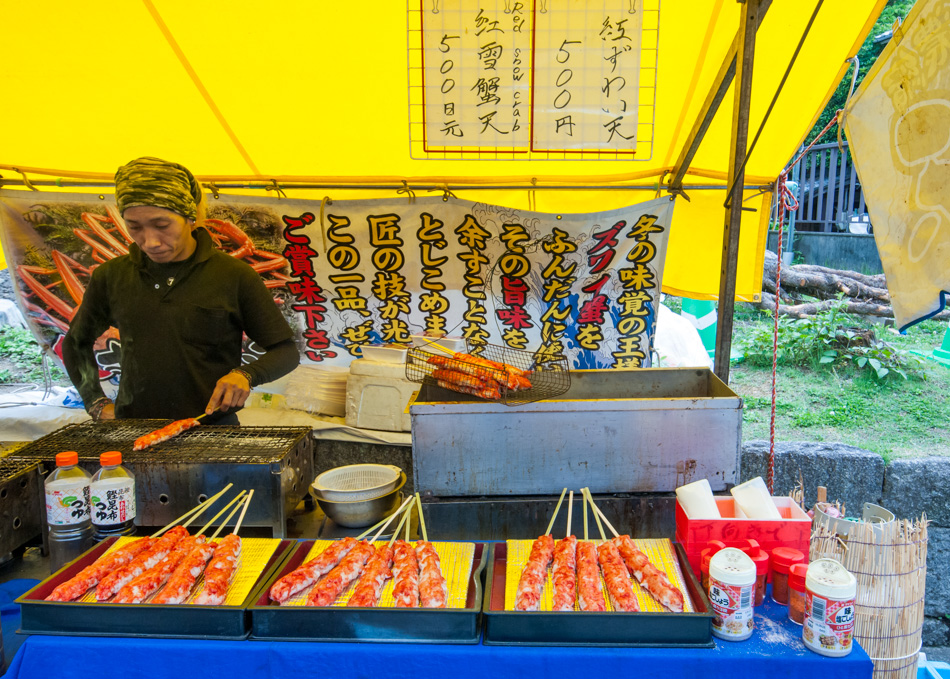
Fried sparrow heads for the adventurous eater!
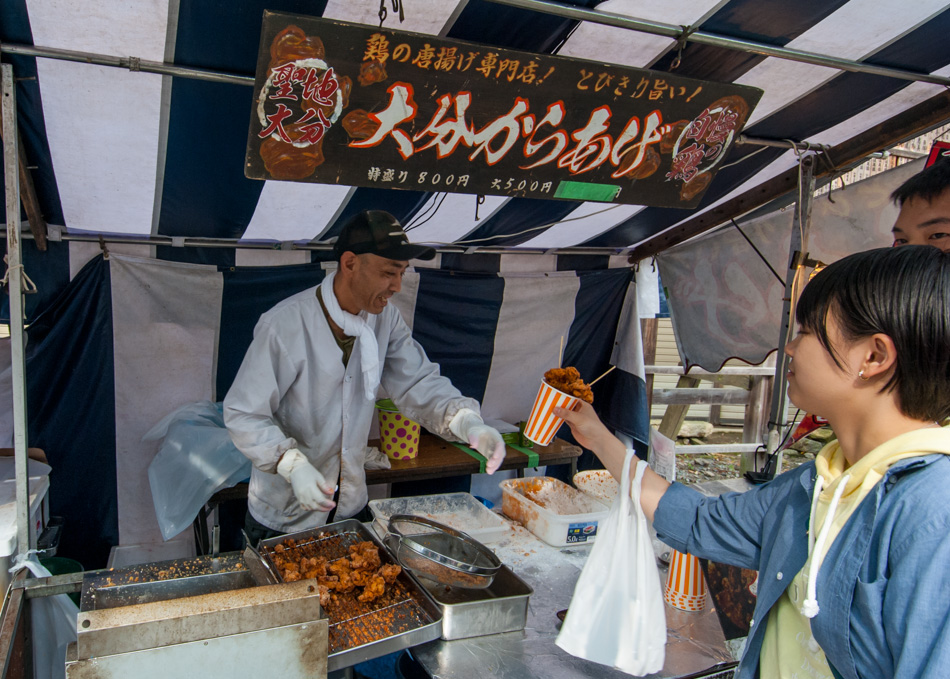
Ice cream, from vanilla to green tea flavored to tofu soft serve, is a mainstay on any shrine roads

Lastly, now that you’ve seen the geisha district and the most important temples and shrines, the perfect way to round up your trip to Kyoto is to bask in its scenic beauty by traveling to the western outskirts, more precisely to the Arashiyama district.
Like everywhere else around here there are plenty of temples, the number one being Tenryu-ji temple with its sprawling gardens and view of the mountains, all very zen.
The Adashino-Nembutsu-ji temple is famous for its 8000 Buddhist statues placed here in memory of those who died without kin.
Charming Gioji temple is nestled into the forest and known for its moss garden punctuated with tall maple trees.
You’ll find lovely tea houses along the way to take a break and admire the surrounding nature.
But the star attraction of Arashiyama is without a doubt the Bamboo Grove which you must have seen in many ‘places to see before you die’ slideshows…with good reason.
An otherworldly place, looking up at the crowd of towering bamboo stalks colliding with each other, the sun filtering through the densely packed grove as you hear nothing but the wind rustling in the stalks… it’s as enchanting as it gets.
You’ll find a lot of restaurants around here serving some variation on the Buddhist vegetarian theme since the area was mostly famous for its temples. This usually consists in yudo (simmered chunks of hot tofu) served with a variety of side dishes. Kyoto’s tofu is widely regarded as the best in Japan, perfected by century old techniques to make perfect blocks of fresh, silky, and surprisingly flavorful tofu that’s nothing like the bland bricks we buy at home.
For a sweet bite, I’m partial to grabbing a mochi from a sweet shop on the street. So many to choose from, and I had usually no idea of the flavor I had picked and was always pleasantly surprised.
Once you’ve done all the touristy sights around the downtown area, it’s worth heading north to see the quieter side of Arashiyama and wander around its residential district.
The Saga-Toriimoto Preserved Street is filled with traditional machiya (“town houses”) in the style of the Meiji Period (1868-1912) and well worth a stroll.
Side streets will let you peek at private and more modern residences.
At the end of the Saga-Toriimoto Preserved Street you’ll find Adashino Nenbutsuji temple, the grounds covered by hundreds of stone statues placed there for the souls of the dead.
Back downtown, a nice way to end the day is to get on the Saga Scenic Railway, a seven kilometers scenic ride from Arashiyama to nearby Kameoka.
The 25 minutes journey takes you slowly alongside the pretty Hozu River so you can enjoy the natural beauty of western Kyoto.
At the end, you can either take a boat ride back to Arashiyama (2hrs) or hop on a train going straight to Kyoto.
A packed schedule but you would have seen some of the best Kyoto has to offer in just a few days, and probably already make plans to be back. Kyoto has a calming and eye-opening effect on everyone and you’ll soon want another dose of that!

